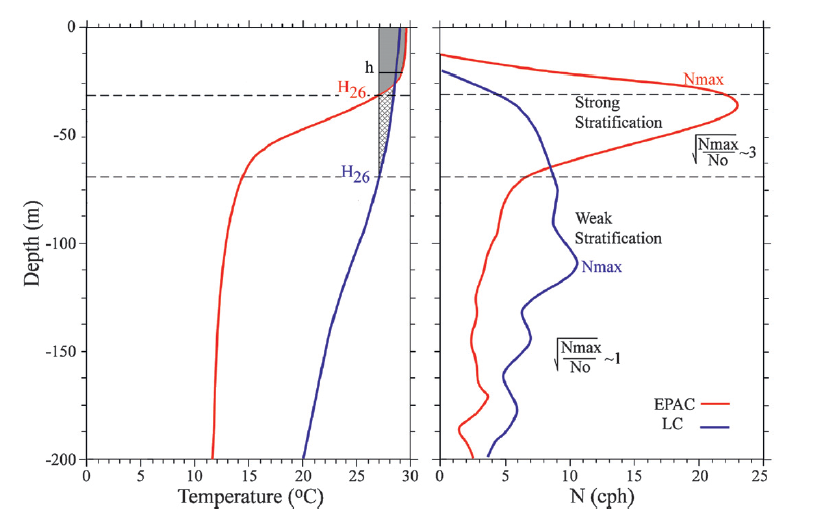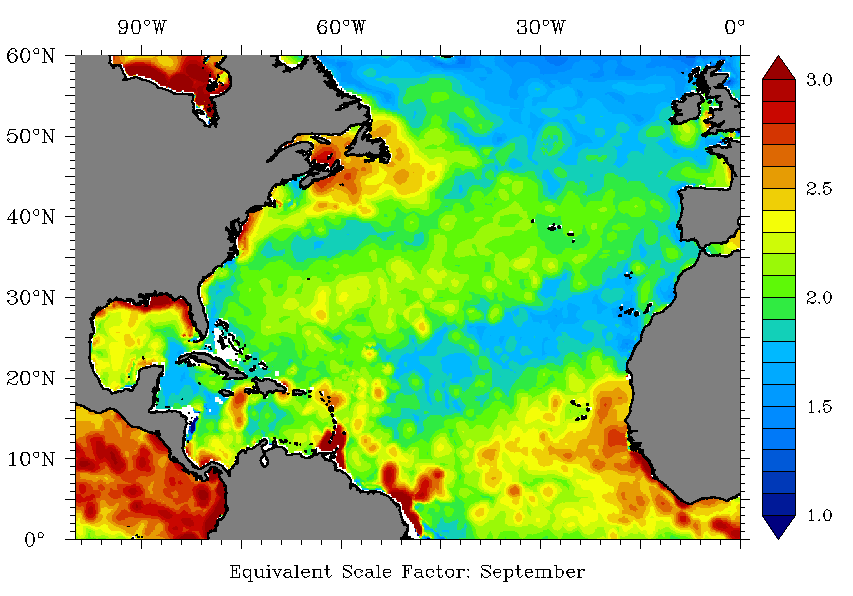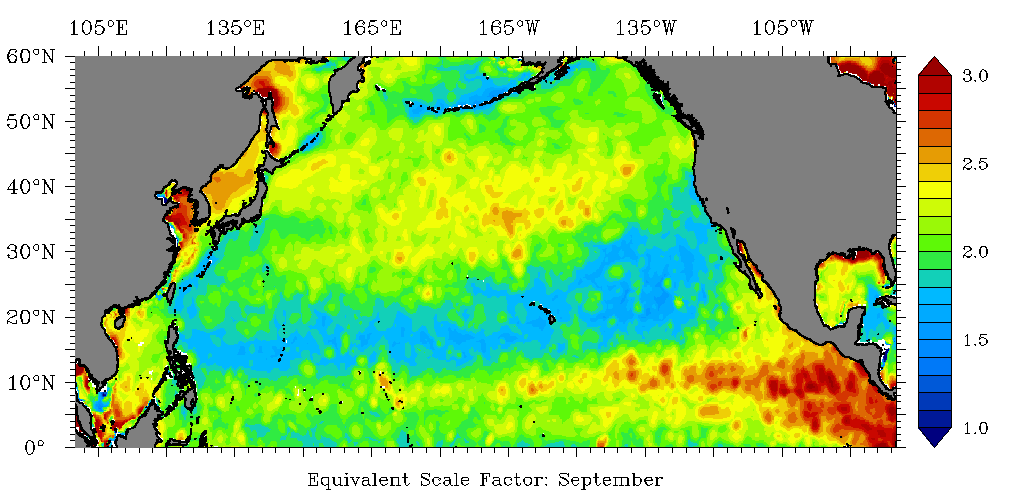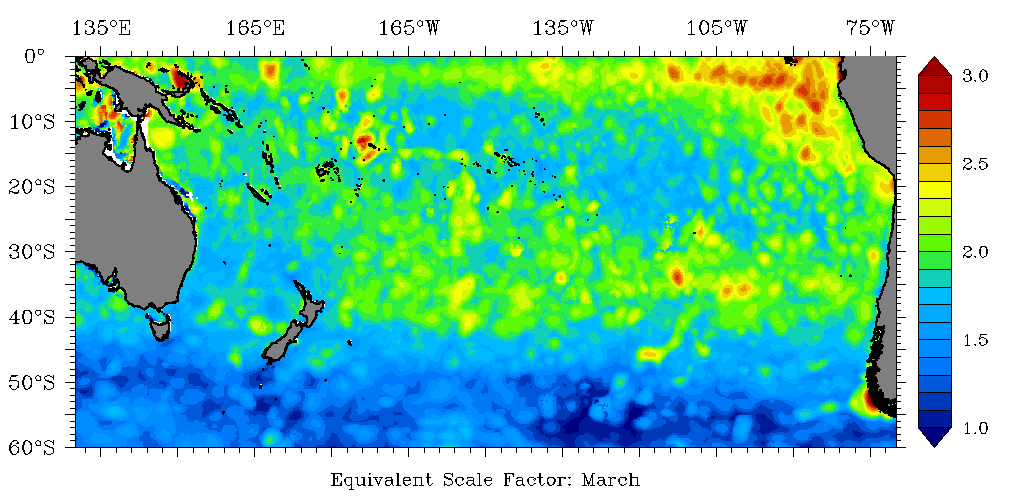
Stratification occurs when ocean water with different properties act as a barrier to ocean mixing. Salinity and Temperature, and thus density, are properties that can form layers and prevent mixing.

Stratification is much stronger in the Eastern Pacific (EPAC) where the stratification or buoyancy frequency (i.e. the vertical derivative of the density structure) has a maximum (Nmax) value of 24 cycles per hour (cph) compared to values of 6 to 12 cph in the Atlantic Ocean basin. The vertical salinity changes at the base of the oceanic mixed layer (h) contribute to these density changes. However, upper ocean salinities in the EPAC tend to be less than in the Gulf of Mexico due to the ITCZ where excess rainfall reduces the mixed layer salinities compared to those in Gulf of Mexico. The shoaling thermocline from west to east sets this large value of the buoyancy frequency, which is a close proxy to the 26°C isotherm depth needed for the OHC estimations.

Equivalent OHC is given by
where OHC is the vertically integrated thermal structure from the surface to the depth of the 26°C isotherm as above. This expression allows us to compare OHC values in differing basins or regions. For example, OHC in September 2001 in the EPAC warm pool ranged between 38 and 43 kJ cm−2. However given the strength of the stratification (S ∼ 3), OHCE ranges from 114 to 129 kJ cm−2, respectively, which means the highly stratified water will act as a barrier to strong shear-induced mixing until such time that vertical shears develop to lower the Richardson number to below critical values. At these low latitudes from 10°–14°N, more OHC is available during hurricane passage through the air–sea fluxes as mixing will be suppressed for a long period of time. In general, entrainment mixing is what forces 65%–80% of the cooling and layer deepening during hurricane passage.
Daily OHCE plots can be found on the North Atlantic, North and South Pacific data pages.









